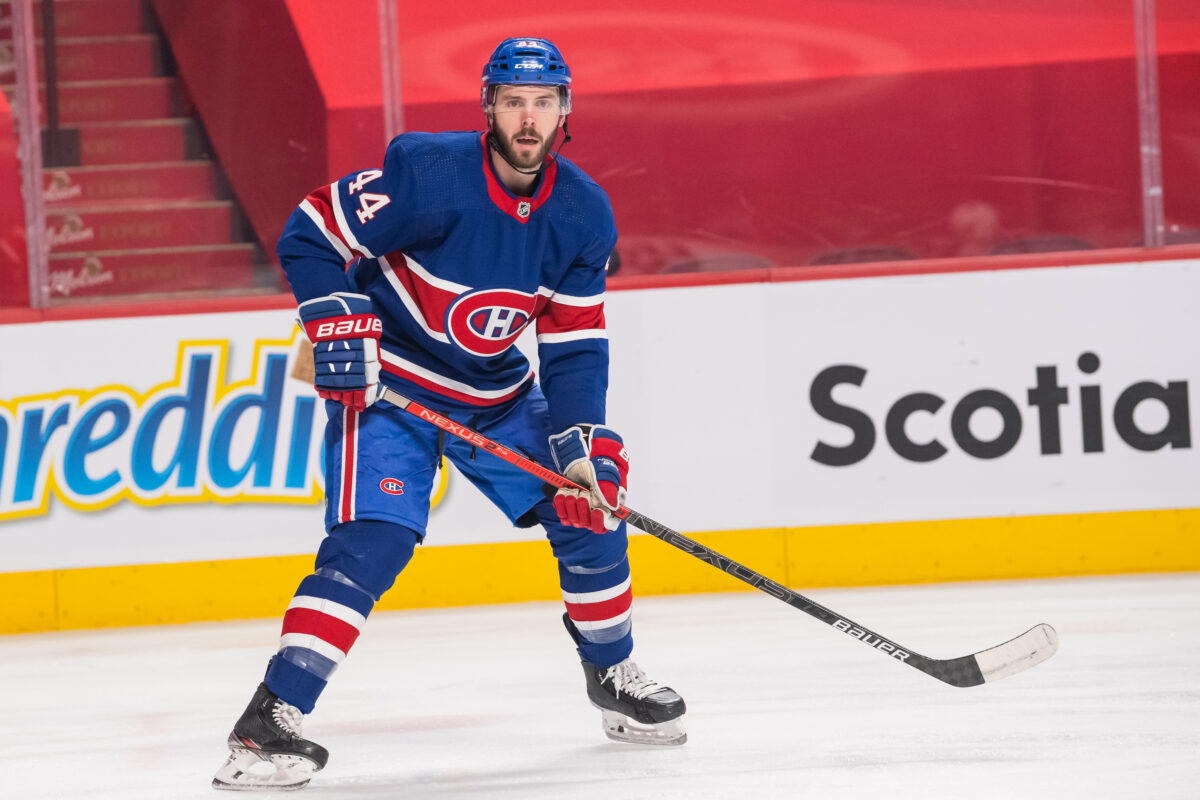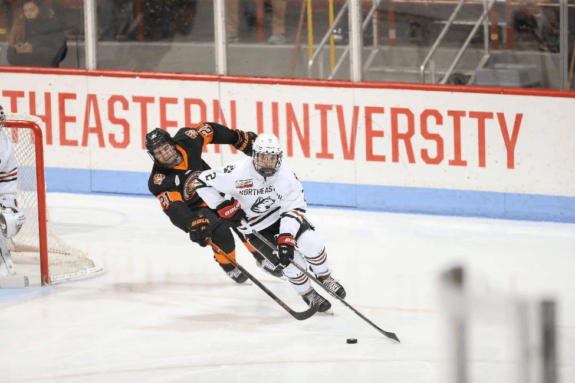The Canadiens are surging with four straight victories under interim head coach Martin St. Louis. They seem to have their confidence back, and are playing competitive hockey again. However, the season is already too far gone for this to amount to anything more than a moral victory for fans as the team is already too far out to even dream of a playoff berth. However, the Canadiens are still likely to get a top-five pick in the 2022 NHL Entry Draft. Still, this newfound confidence is an important developmental step for the team’s youth — to play in an environment that values work ethic and pride in the process.
That being said, the Canadiens will be entering a difficult period as they rebuild around that young core of Nick Suzuki, Cole Caufield, Alexander Romanov and the dozens of good-quality prospects in the system.

One way to expedite the rebuild process would be to focus on modernizing the Canadiens’ blue line using picks and prospects.
Canadiens Embracing Innovation
Part of modernizing the blue line is to embrace innovation. The Canadiens have fallen behind the rest of the NHL in the application of advanced statistics in their hockey decisions. General manager Kent Hughes discussed it in his introductory press conference. In one short sentence he pointed out the biggest flaw in the organization’s hockey operations department; focusing on the “what” rather than the “why” of any given problem.
“I don’t want us to be an organization that evaluates a player and says, ‘He’s not performing.’ I want to understand why he isn’t performing.”
-Kent Hughes
The promotion of John Sedgwick to assistant general manager punctuates that desire. His expertise in managing the salary cap will continue to be his main role, but he will also be called upon to assist in modernizing the information-gathering apparatus the Canadiens must employ to catch up to the rest of the NHL.
“I’m someone who doesn’t like the term analytics very much, I think if you replaced it with information, you would find that very few people would object to analytics. I’m a believer in information. I’m a believer in processes. It’s not to say that we had bad processes, but I think it’s always something that you’re trying to improve. I think that’s modern thinking.”
– John Sedgwick (Stu Cowan, Canadiens Promote John Sedgwick to Assistant General Manager, Montreal Gazette, 23 Feb 2022)
Those teams that employ this tool have all concluded that a mobile blue line, filled with six defensemen capable of not just playing defense, but also an ability to transition to offence is vital to long-term success in the NHL today.
Canadiens Play Keep Him/Trade Him
A rebuild doesn’t mean a complete fire sale. The Habs have several good, young assets already on hand or in the pipeline. But a focus on modernizing the blue line, with a defence able to defend and transition, would hasten the rebuild.
In the “keep him” category, there will need to be some veterans to help provide leadership and stabilize the defensive structure. Those players are already on hand in Joel Edmundson and David Savard. Both have won the Stanley Cup, both are able to play a defensive style and fill in on the penalty-killing units. Their combined salary cap hit of $7 million is reasonable for those roles as it accounts for only 8.58 percent of the $81.5 million total salary cap.

In the “trade him” category, that leaves several unrestricted free agents (UFA) such as Brett Kulak and Ben Chiarot who are likely to move prior to the March 21 trade deadline. The return for Chiarot will play an important part of any rebuild as the asking price is high — a first-round pick and a prospect. If Hughes could wrestle away a more established defensive prospect who is nearly NHL ready, then he can add to the young core and expedite the rebuild of the blue line.
Another player in the “trade him” category is Jeff Petry, who is also likely on the move. He is the prototypical style of defender a team needs in the modern NHL, solid defensively, mobile and able to produce offence. However, his age (34 years old) has him too old to be effective once the current core reach their prime years. The good news for Canadiens fans is that Hughes has the luxury of time to make a deal. He can wait for the offseason to build a larger pool of interested teams. If he can achieve that, at that point, he can pull the trigger on a deal that can be beneficial to the player as well as the team.
Habs Need Youth to Graduate
There are several quality, young defensive prospects in the Canadiens’ pipeline — players such as 2020 first-round pick Kaiden Guhle, captain of Team Canada’s 2022 edition for the under-20 World Junior Hockey Championships. Another is 2021 first-round pick Logan Mailloux, who despite missing the first half of the Ontario Hockey League (OHL) season due to a suspension for his actions in Sweden, has stepped in and become a key player for the London Knights. Mathias Norlinder is another young defender — Canadiens fans have seen flashes of his skill set in his short stay in North America before returning to play in Europe.
Related: Canadiens’ Trade Destinations for Jeff Petry
The uniting theme for all of these prospects has been mobility, an ability to generate offence on the transition as well as a desire to flash offensive skills once in the offensive zone. Their skills have a direct impact on the advanced stats that denote puck possession, an aspect of the game that the Canadiens’ new general manager has stated he wants the team to become elite in.
Another prospect that could become a key figure in the Canadiens’ rebuild is Jordan Harris, a defenseman at Northeastern University. The 22-year-old is set to become a UFA as he has until Aug. 15, 2022, to sign a pro contract with Montreal. Hughes said he had spoken to Harris and his agent.

“The discussions with Jordan, his agent, and his family continue. I met him during the week off for the All-Star break, and I spoke with Jordan again yesterday. The discussions are ongoing,” confirmed Hughes. “I communicated our interest in signing him when the season is over. I remain confident.”
-Kent Hughes
Being one of the top defensive prospects in the NCAA, who also plays a very mobile style of defense that fits into the Habs’ future plans, makes Harris an important building block. It also would help in building Montreal as a desirable destination for UFAs in the future.
That is only what is on hand in the Canadiens’ system. Hughes will have several pieces to help build up the blue line. There is also the 2022 and 2023 Entry Drafts, where Hughes currently has three first and two second-round draft picks, as well as any trade returns for Chiarot and Petry that could be used to bring back a quality defensive prospect each — prospects that fit Hughes’ vision of a team built on speed and puck possession.
The Canadiens’ new focus on analytics and the application of that information will be a major contributor in assessing a player’s development and on-ice impact. They can use this to rediscover the ability to innovative, not just in development, but also in making real-time coaching decisions, whether it’s creating a scoring line, using a player in a new situation his numbers say he would be able to make an impact in, on the penalty kill, late in the game, or against a specific player in a matchup.
Most of all, based on the words management has used about the team’s direction, this new-found desire to modernize should lead to a competitive product. Also, past actions by Jeff Gorton when he was general manager of the New York Rangers point to Habs’ top priority being to move towards a young, mobile, modern blue line. Doing so will modernize the Canadiens and speed up the rebuild process.